[Editor’s Note: Our mission is to continually explore the Operational Environment (OE) and the changing character of warfare on behalf of the Army. One of the tools we use — crowdsourcing — engages our extensive community of action to help broaden the Army’s horizons and explore future possibilities; discerning the impacts emergent technologies and trends will have on the OE and the future of combat.
Army Mad Scientist had a banner year in 2021, with 29 posts by guest bloggers. Crowdsourced submissions of note included:
CPT Anjanay Kumar‘s winning submission The U.S. Joint Force’s Defeat before Conflict — from our Mad Scientist Writing Contest on the 4C’s: Competition, Crisis, Conflict, and Change — plausibly laying 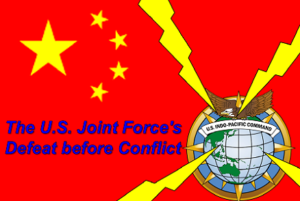 out a scenario where China could reunite Taiwan with the mainland under the mantle of the CCP, while operationally and tactically immobilizing the U.S. Joint Force in a lightning fast strike lasting perhaps no longer than a three day weekend — fait accompli — achieving a stranglehold over the global economy.
out a scenario where China could reunite Taiwan with the mainland under the mantle of the CCP, while operationally and tactically immobilizing the U.S. Joint Force in a lightning fast strike lasting perhaps no longer than a three day weekend — fait accompli — achieving a stranglehold over the global economy.
LTC Christopher J. Heatherly‘s submission The Case for Restructuring the Department of Defense to Fight in the 21st Century — also from the aforementioned contest — challenging the “old guard” in calling for a  number of bold, transformative actions, including a major restructuring of the DoD, fully embracing the philosophy of Mission Command, drastically improving the Army’s deployment speed, making radical changes to the procurement cycle, and developing and implementing an enduring national military strategy.
number of bold, transformative actions, including a major restructuring of the DoD, fully embracing the philosophy of Mission Command, drastically improving the Army’s deployment speed, making radical changes to the procurement cycle, and developing and implementing an enduring national military strategy.
In keeping with our New Year’s tradition, Mad Scientist Laboratory is pleased to announce SGM Daniel S. Nasereddine is our “Maddest Guest Blogger for 2021.” His winning submission The Dawn of the Loitering Munitions Era — from last year’s Mad Scientist / U.S. Army Sergeants Major Academy Annual Writing Contest — generated much interest on our blog site and Twitter page. Will the U.S. Army heed the lessons learned over 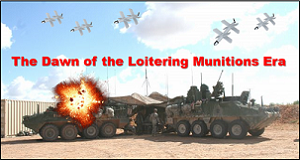 the past three decades — most recently by the Russians and Armenians in Nagorno-Karabakh — regarding the disruption wrought by loitering munitions on today’s battlefield? Until measures specifically addressing operations in the presence of loitering munitions make their way into Army doctrine, manuals, and training pipelines, our Soldiers remain vulnerable — Read on!]
the past three decades — most recently by the Russians and Armenians in Nagorno-Karabakh — regarding the disruption wrought by loitering munitions on today’s battlefield? Until measures specifically addressing operations in the presence of loitering munitions make their way into Army doctrine, manuals, and training pipelines, our Soldiers remain vulnerable — Read on!]
For many years, scholarly articles, books, and publications warned, with varied degrees of urgency, about the inevitable next step in the development of unmanned weapons platforms. At the mention of drone warfare, most casual observers still think about the Predator and Reaper drones of the War on Terror vintage. However, the next step in unmanned warfare – and warfare in general – is already here. These new weapon systems have many names: kamikaze drones, loitering munitions, and suicide drones, to name a few. They also differ in terms of capabilities, sophistication, autonomy levels, and capacity to cooperate in a swarm. However, they are all inexpensive, impossible to control in terms of proliferation, and they are here today. The latest conflict in Nagorno-Karabakh demonstrated that modern loitering munitions are causing a revolution in land warfare similar to the introduction of the machine gun. While the United States is developing similar offensive capabilities, there is an urgent need for a comprehensive change to doctrine and training across the U.S. military to enable operations in environments with a significant prevalence of enemy loitering munitions.
A Cautionary Tale
Trench warfare, a staple of visual media depicting the Western Front during the Great War, followed a series of devastating maneuver battles fought in the opening months of the hostilities. The year 1914 proved pivotal in the development of modern tactical thinking. Prior to the outbreak of the war, most armies saw some evolutionary doctrinal advances over the Napoleonic Wars-era drill. The Franco-Prussian War, the Anglo-Boer conflicts, and the Russo-Japanese War repeatedly demonstrated the devastation that the power of breechloaders, magazine rifles, and machine guns unleashed upon close-order line formations (Jackman, 204, p. 98).
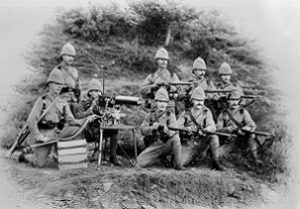
British National Army Museum, Public Domain
In 1898, writing about the nature of colonial conflicts, Hilaire Belloc coined a famous quip, “Whatever happens we have got The Maxim Gun, and they have not” (p. 41). Despite the experiences of over 30 years of warfare, major militaries of Europe entered the Great War with a strange blend of the old Napoleonic drill and more modern techniques. The German 1906 regulations largely preserved the “old Prussian Drill” and close control, radically breaking with old approaches only after the outbreak of the war (Jackman, 2004, p. 102). While British doctrine was more advanced, including open and extended order formations, it still overexposed the Soldier to murderous machine gun fire during the prescribed bayonet rush (Anonymous, 1919, p. 460). Moreover, in 1917, the U.S. War Department sent information collection teams to the Western Front, resulting in the U.S. Army entering the fight in 1918 with the modernized doctrine (Stieghan, 2018, p. 30). The primary implication here is that at the end of 1916, the U.S. Army still maintained the Civil War-era line and skirmish tactics.
All militaries mentioned above had ample warning that a fundamental change to the nature of warfare was at hand. Moreover, all of them had an opportunity to employ the new weaponry in limited and colonial conflicts, as well as observe its use by their rivals. The exact reasons behind those nations’ failure to implement appropriate doctrinal changes are complex and varied; however, the old adage stating that generals always prepare to fight the previous war seems to hold true.
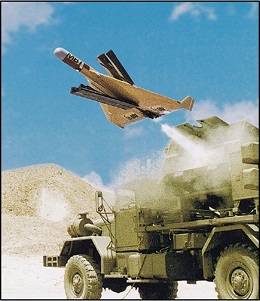
The first properly modern loitering munition, IAI Harpy, appeared in the late 1980s (Gilli & Gilli, 2016, p. 68). Since then, it has seen employment in several limited and irregular conflicts and now in one relatively large-scale war.
It took military professionals 30 years to notice and appreciate the machine gun’s effect on the battlefield. Following this logic, it is now past time to do the same for loitering munitions.
Loitering Munitions
History
Arguably, the Israelis were the first to appreciate the importance of an unmanned aerial platform in a combat capacity. Recalling problems the Soviet-made surface-to-air missiles (SAM) posed to the Israeli Air Force (IAF) during the Yom Kippur War, the IAF developed an innovative approach of providing real-time targeting links from unmanned drones to their warplanes during an operation to suppress Syrian integrated air defense system (IADS) in the Beqaa Valley, Lebanon in 1982 (Grant, 2002, para. 4).

As the result, the IAF wiped out the entire Syrian IADS within two hours, following it with a wholesale slaughter of the Syrian Air Force with a score of 87-0 (Grant, 2002, para. 5). After this demonstration of unmanned vehicles’ targeting capabilities during the challenging Suppression of Enemy Air Defense (SEAD) mission, the next logical step was to forego the need for a manned platform to carry the munition. Thus, 1982’s Operation Mole Cricket 19 became the starting point for modern drone warfare. What followed was the adoption of an armed drone by militaries and intelligence services of many nations. However, to this day, most armed drones occupy the niche of a light attack warplane, being large, costing millions of dollars, requiring remote operation, and carrying expensive munitions. These features significantly limit the number of systems a combatant can afford to deploy. As such, these platforms are vulnerable to a sophisticated enemy’s standard Anti-Access/Area Denial (A2/AD) measures, such as IADS. Moreover, using a million-dollar SAM to target a million-dollar drone makes economic sense.
Platform to Munition
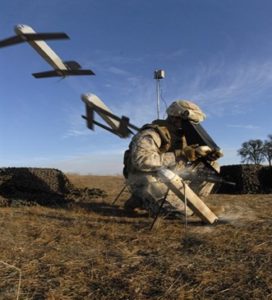
Early in the development of unmanned platforms, the Israelis recognized their inherent limitation of high cost and consequent limited numbers, which led to the development and fielding of IAI Harpy, the first successful modern attempt at a vehicle which combined the advantages of an unmanned aerial platform with the limited cost of a single-use munition (Gilli & Gilli, 2016, p. 68). Loitering munitions do not need precision targeting ahead of time, unlike cruise missiles, and cost orders of magnitude less than armed unmanned aerial platforms. The American-made Switchblade reportedly costs around $70,000 per unit, while modern variants of a larger and more expensive IAI Harpy come out to approximately $300,000 per munition (Gettinger & Michel, 2017, p. 3). Furthermore, with today’s networking and artificial intelligence (AI) technologies, loitering munition development is trending toward smaller and cheaper units with swarming and autonomous capabilities. For example, the 1990 IAI Harpy is over two meters long and weighs 135 kilograms, while most loitering munitions developed after 2010 weigh between two and 30 kilograms and possess significant onboard computing and networking capabilities (Gettinger & Michel, 2017, p. 3). No traditional A2/AD system can deal with threats this smart, small, cheap, and numerous.
Proliferation
To date, all attempts by non-state actors, such as Hezbollah or Islamic State, to produce loitering munitions locally resulted in the limited success of employing remote-controlled planes and commercial drones packed with explosives, as well as slightly modified cruise missiles supplied by their state sponsors (Gilli & Gilli, 2016, p. 69). Such weapons retain the weaknesses of their precursors and are not proper modern loitering munitions. However, the list of nations producing loitering munitions continues to grow. What started 30 years ago with Israel, the U.S., and Britain, now includes China, Turkey, South Korea, Poland, and Iran, as well as several other countries that do not normally reside at the cutting edge of technology (Gettinger & Michel, 2017, pp. 3-5). Furthermore, many other nations operate foreign-made loitering munitions. As the technology becomes more ubiquitous, non-state actors are joining the developing nations in operating technology many still consider emerging, despite becoming practical over 30 years ago. Loitering munitions already have significant application history.
Before Nagorno-Karabakh: Turkey and Iran

The Turkish military successfully employed armed unmanned platforms and loitering munitions against the Russian proxy forces in Syria and Libya, including locations characterized by complete air dominance of the Russian Airspace Forces and Syrian-Russian IADS. However, early 2020 saw Turkish involvement in Libya against the Russian-backed forces of General Haftar. As a highlight, the Turkish military organized a spectacular hunt for the Russian Pantsir-S short-range air defense (SHORAD) systems using unmanned platforms and loitering munitions, posting close to 30 unique destruction videos on the Internet (Kasapoğlu, 2020, p. 122). In both conflicts, Turkish unmanned platforms and loitering munitions penetrated the latest Russian A2/AD systems, often manned by Russian Soldiers thinly disguised as mercenaries.
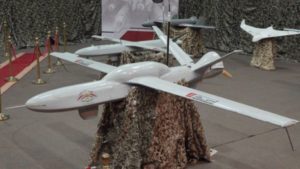
Using Yemeni Houthis as proxies, Iran targeted the Saudi oil refinery at Abqaiq using a saturation attack by Sammad-series loitering munitions in September of 2019. While not as high-tech as Israeli or Turkish unmanned systems, the Iranians employed a saturation attack, a precursor to swarming. Even more disturbingly, the Saudis deployed the U.S.-made Patriot system to protect this critical piece of infrastructure, which proved ineffective in the event (Kalin & Westall, 2019). However, the Syria, Libya, and Saudi Arabia events do not rise to the level of conventional warfare. Not one of these cases represents loitering munitions successfully operating in the A2/AD environment of a fully functional national IADS primed and ready to defend against a conventional opponent. However, this situation changed with the flare-up of a long-frozen conflict in the Caucasus.
The 2020 Nagorno-Karabakh War
The 2020 Nagorno-Karabakh War represents the first employment of loitering munitions en masse against a fully functional state military. Armenia operated an IADS comprised of a combination of Soviet and Russian short, medium, and long-range systems, integrated with targeting, tracking, and early warning radars into a single command and control infrastructure (Shaikh & Rumbaugh, 2020, para. 15). During the conflict’s opening phase, the Azerbaijani military employed a mixture of Turkish and Israeli unmanned weapons platforms and loitering munitions primarily in the SEAD role. The successful penetration and destruction of Armenian IADS becomes evident if we consider that within 48 hours, the attacks by unmanned systems transitioned from SEAD to knocking out Armenian heavy equipment, command and control, and fire support (Shaikh & Rumbaugh, 2020, para. 2). Much like Turkey, the Azerbaijani military made full use of propaganda by posting hundreds of strike videos on the Internet. Besides their propaganda value, these videos are useful for research, as many depict Azerbaijani loitering munitions striking fully deployed Armenian SHORAD complexes. This is significant because such systems are the means that are supposed to protect the force against such threats; however, Armenian SHORAD seemed unable to defend itself (Shaikh & Rumbaugh, 2020, para. 15). Toward the end of the conflict, with much of the Armenian equipment destroyed or withdrawn, Azerbaijani unmanned platforms and loitering munitions hunted small groups and even individual Soldiers.
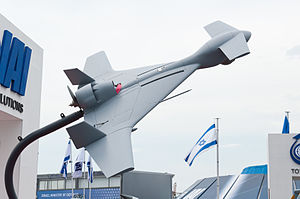
From the tactical point of view, Armenian trenches, earthworks, bunkers, armored vehicles, and other places troops tend to concentrate in to find protection on the battlefield became places of increased danger instead of safety. In effect, in an operational environment with a significant presence of loitering munitions, the trench becomes a mass grave. The Azerbaijani military is a third-rate force, while Azerbaijan itself is not technologically advanced. However, this conflict demonstrates that even minor actors can acquire and effectively employ this type of technology. Naturally, sophisticated adversaries’ capabilities in the realm of loitering munitions are certainly more advanced. Therefore, the ability to protect friendly forces from the effects of loitering munitions becomes paramount.
Traditional Protection Problem

Many years of limited conflict gutted the U.S. Army’s Air Defense Artillery (ADA) branch to the extent that there are no organic ADA assets below Corps level. However, the reliance on the Air Force and air components of other Services to establish air dominance over the battlefield is misplaced. While it is likely that the U.S. air assets will gain air superiority or air dominance against any threat, the Russian experience demonstrates that air dominance cannot protect ground troops against attacks by loitering munitions and Unmanned Combat Aerial Vehicles. Similarly, Russian and Armenian experiences displayed the weakness of traditional SHORAD and even IADS against this threat. Dozens of videos depicting the destruction of modern S-300, Tor, and Pantsir-S air defense complexes are readily available on the Internet. Furthermore, while electronic countermeasures are effective against the legacy remote-controlled unmanned platform, they are not as useful against loitering munitions in a fully automated mode or under control of an on-board AI. Most loitering munitions resist detection and observation by radar because of their small size and composite construction materials, which makes detection, targeting, and early warning a challenge. Furthermore, swarming, saturation, and multi-vector coordinated attacks can overwhelm even rotary cannon Close-In Weapon Systems, such as Phalanx. Therefore, while strengthening the ADA branch is better than doing nothing, currently fielded systems will not be able to cope with loitering munitions. The primary lesson of the conflicts in Libya, Syria, and Nagorno-Karabakh is that loitering munitions do not belong in the same category as other airborne threats. The U.S. military must internalize that lesson.
Doctrine and Training
One can only hope that technologies that can effectively negate the threat of loitering munitions are in development for the U.S. military. In 1914 it took time; however, militaries learned to cope with the machine gun, first with the transition to trench warfare and later with the development of mobile, armored firepower. Making a parallel with the Great War, the “tank” has not arrived yet, but the Soldier already possesses an entrenching tool. Similarly, it is prudent to prepare U.S. ground forces to operate in environments with significant employment of loitering munitions by the enemy.
Unfortunately, the current doctrine, such as Army Doctrinal Publication 3-37 (Protection) does not contain a single mention of loitering munitions. The more specialized Field Manual 3-01 (Air and Missile Defense) does specify that “[Unmanned Aircraft Systems (UAS)] platforms also can serve as a means for weapons delivery or may themselves serve as the weapon” (Department of the Army, 2020, p. 3-7). Nevertheless, the current combined arms active protection solution suggests that “maneuver forces on the tactical edge of the battlefield use their organic weapons to engage surveilling or attacking rotary- or fixed-wing aircraft and UASs” (Department of the Army, 2020, p. 11-4). Finally, the combined arms air defense manual, Army Techniques Publication 3-01.8, does not discuss loitering munitions either. It provides only generalized guidance on passive defense measures – camouflage, dispersion, and hardening – common to all types of airborne threats. This is exactly the mistake that the Russians and the Armenians made; they did not consider loitering munitions separate from other types of airborne threats, learning the hard way that traditional active or passive defensive measures are not effective against them.
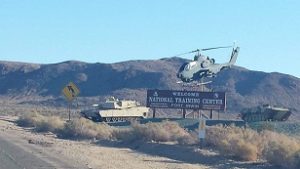
As U.S. doctrine currently makes precisely the same mistake, the U.S. Army lacks procedures to train its tactical formations to operate in environments with a significant presence of loitering munitions. For example, the Combat Training Centers do not simulate unmanned platforms as kinetic threats. In the absence of an appropriate doctrine, branch-level publications for infantry, armor, artillery, and support do not address loitering munitions and use generalized narratives for active and passive air defense measures borrowed from specialized publications. This situation is similar to the one that Western militaries found themselves in at the beginning of World War I. They all had machine guns. They understood the potential of machine guns sufficiently to purchase and field the new weapon. However, they failed to adjust doctrines and training to prepare and train their forces to operate against an enemy who also had machine guns.
Conclusion
The urgent need for a comprehensive change to American doctrine and training to account for the threat of loitering munitions is undeniable. The understanding of loitering munitions that may exist at upper echelons is currently irrelevant to personnel operating at the tactical level. It does not improve their ability to cope with this form of threat environment. Russia and Armenia already paid for their failure to recognize the appearance of a revolutionary weapon on the battlefield with thousands of lives and billions of dollars in lost military hardware. The U.S. military is – and will remain – similarly vulnerable, until measures specifically addressing operations in the presence of loitering munitions make their way into doctrine, manuals, and training pipelines. The first step in the right direction must be the acknowledgment that loitering munitions do not belong in the same category as planes, helicopters, and other types of UAS. Lastly, this threat is here today. Therefore, if technologies and equipment to counter loitering munitions already exist, the U.S. military must press forward immediately with their acquisition and fielding, while there is time to integrate them into operational architectures at appropriate command levels. Other countries already paid for this lesson; there is no need to pay for it again.
If you enjoyed this post, check out the following related content:
Insights from the Nagorno-Karabakh Conflict in 2020 (Part I and II)
Top Attack: Lessons Learned from the Second Nagorno-Karabakh War and listen to the associated podcast
“Once More unto The Breach Dear Friends”: From English Longbows to Azerbaijani Drones, Army Modernization STILL Means More than Materiel, by Ian Sullivan.
The Convergence: The Future of Ground Warfare with COL Scott Shaw and listen to the associated podcast
Jomini’s Revenge: Mass Strikes Back! by proclaimed Mad Scientist Zachery Tyson Brown
How Big of a Deal are Drone Swarms? by proclaimed Mad Scientist Zachary Kallenborn
>>>> REMINDER — ONLY ONE WEEK LEFT! Army Mad Scientist Fall / Winter Writing Contest: We want to crowdsource the intellect of the Nation (You!) with our Fall / Winter Writing Contest’s two themes — Back to the Future and Divergence — check out the associated writing prompts in the contest flyer and announcement, then get busy crafting your submissions — entries will be accepted in two formats:
Army Mad Scientist Fall / Winter Writing Contest: We want to crowdsource the intellect of the Nation (You!) with our Fall / Winter Writing Contest’s two themes — Back to the Future and Divergence — check out the associated writing prompts in the contest flyer and announcement, then get busy crafting your submissions — entries will be accepted in two formats:
Written essay (no more than 1500 words, please!)
Tweet @ArmyMadSci, using either #MadSciBacktotheFuture or #MadSciDivergence
We will pick a winner from each of these two formats!

Contest Winners will be proclaimed official Mad Scientists and be featured in the Mad Scientist Laboratory. Semi-finalists of merit will also be published!
DEADLINE: All entries must be submitted to madscitradoc@gmail.com NLT 11:59 pm Eastern on January 10, 2022!
Any questions? Don’t hesitate to reach out to us — send us an eMail at: madscitradoc@gmail.com
About the Author: Sergeant Major Daniel S. Nasereddine enlisted in the U.S. Army in 2004 as a 13B Cannon Crewmember. He served in a number of Field Artillery and broadening positions and completed five deployments to Iraq and Afghanistan. He holds a master’s degree in Diplomacy from Norwich University.
Disclaimer: The views expressed in this blog post do not necessarily reflect those of the Department of Defense, Department of the Army, Army Futures Command (AFC), or Training and Doctrine Command (TRADOC).
References
Anonymous. (1919) Infantry tactics, 1914–1918. Royal United Services Institution Journal, 64(455), 460-469. https://doi-org/10.1080/03071841909426062
Belloc, H. (1898). The modern traveler. Edward Arnold. https://www.gutenberg.org/files/61521/61521-h/61521-h.htm
Department of the Army. (2016). Techniques for combined arms for air defense (ATP 3-01.8). https://armypubs.army.mil/epubs/DR_pubs/DR_a/ARN2446-ATP_3-01.8-000-WEB-1.pdf
Department of the Army. (2019). Protection (ADP 3-37). https://armypubs.army.mil/epubs/DR_pubs/DR_a/pdf/web/ARN18685_ADP%203-37%20FINAL%20WEB_v2.pdf
Department of the Army. (2020). U.S. Army air and missile defense operations (FM 3-01). https://armypubs.army.mil/epubs/DR_pubs/DR_a/ARN31339-FM_3-01-000-WEB-1.pdf
Gettinger, D., & Michel, A. (2017). Loitering munitions: In focus. Bard University. https://dronecenter.bard.edu/files/2017/02/CSD-Loitering-Munitions.pdf
Gilli, A., & Gilli, M. (2016). The diffusion of drone warfare? Industrial, organizational, and infrastructural constraints. Security Studies, 25(1), 50–84. https://doi-org/10.1080/09636412.2016.1134189
Grant, R. (2002, June 1). The Beqaa Valley War. Air Force Magazine. https://www.airforcemag.com/article/0602bekaa/
Jackman, S. (2004). “Shoulder to shoulder: Close control and ‘old Prussian Drill’ in German offensive infantry tactics, 1871-1914.” The Journal of Military History, 68(1), 73-104.
Kalin, S., & Westall, S. (2019, September 17). Costly Saudi defenses prove no match for drones, cruise missiles. Reuters. https://www.reuters.com/article/us-saudi-aramco-security/costly-saudi-defenses-prove-no-match-for-drones-cruise-missiles-idINKBN1W22FR
Kasapoğlu, C. (2020). Turkey’s burgeoning defense technological and industrial base and expeditionary military policy. Insight Turkey, 22(3), 115-130. http://dx.doi.org/10.25253/99.2020223.08
Shaikh, S., & Rumbaugh, W. (2020, December 8). The air and missile war in Nagorno-Karabakh: Lessons for the future of strike and defense. Center for Strategic and International Studies. https://www.csis.org/analysis/air-and-missile-war-nagorno-karabakh-lessons-future-strike-and-defense
Stieghan, D. (2018). “Fire and maneuver: The U.S. infantry revolution of 1918.” Infantry, 107(3), 30–33.



